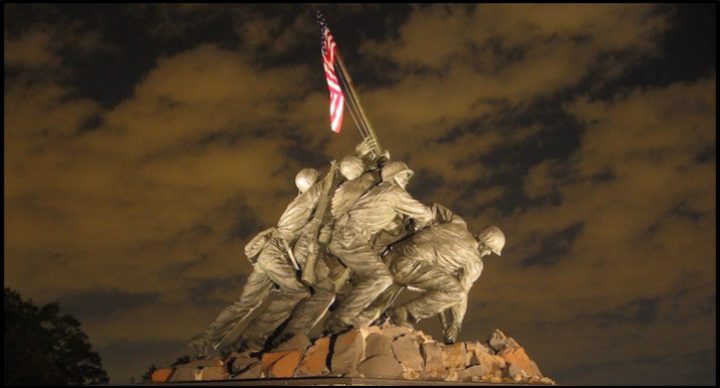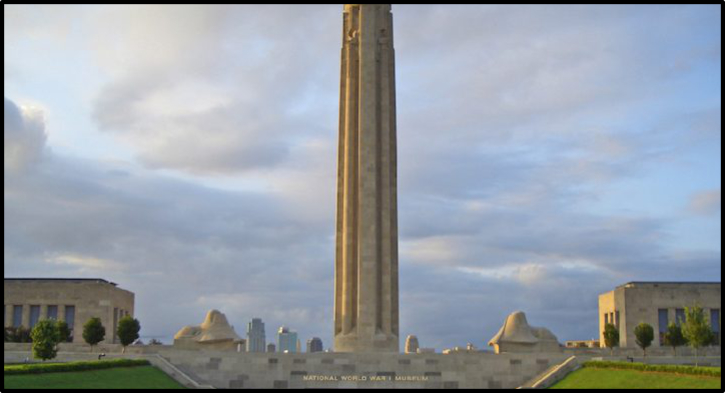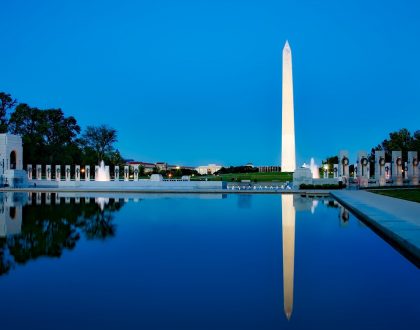United States History

Course Features
Course Details
Course Overview
The Acellus United States History course, taught by Todd Edmond, provides a thorough examination of United States history from the days of reconstruction to modern America. Students will explore significant events, social movements, and political developments that have shaped the nation's trajectory. The course begins by studying the end of the Western frontier, the Age of Enlightenment, and the creation of the Constitution. It then delves into the Industrial Revolution, immigration boom, Progressive Era, and America's imperialistic endeavors during the Spanish-American War.
Continuing the journey through history, students will analyze the impact of World War I, the Roaring Twenties, and the Great Depression. They will explore the causes and consequences of these transformative periods, including the rise of industrial tycoons, the fight for civil rights, and the implementation of the New Deal policies. The course also covers World War II, the Cold War era, and the Civil Rights Movement, highlighting significant events, key figures, and societal changes that shaped these periods.
In the latter part of the course, students will study the Vietnam War, social changes of the 1970s, and the domestic policies of presidents from Carter to Clinton. The course also addresses the impact of drug abuse, the evolving dynamics of U.S.-Mexico relations, and the challenges of the post-9/11 War on Terror. By the end of the course, students will have a comprehensive understanding of the historical forces that have shaped the United States and its role in the modern world.
Throughout the course, students will develop critical thinking skills, engage with primary and secondary sources, and analyze complex historical phenomena. The course aims to foster a nuanced understanding of American history, enabling students to comprehend the nation's past, evaluate its present, and navigate its future.
 This course was developed by the International Academy of Science.
Learn More
This course was developed by the International Academy of Science.
Learn More
Scope and Sequence
Unit 1 - The End of the Western Frontier This unit explores the closing of the Western frontier in the United States. It delves into significant events and aspects of this era, such as the Age of Enlightenment, which was a period of intellectual growth and rational thinking. The Old South Meeting House is discussed, highlighting its historical importance as a gathering place for colonists during the Revolutionary War. The Creation of the Constitution is also examined, shedding light on the formation of the fundamental principles and structure of the American government. Additionally, pivotal events like the Boston Tea Party, the First Great Awakening, and the Homestead Act are explored, providing insight into the social, political, and economic changes that shaped the end of the Western frontier.
Unit 2 - A New Industrial Age This unit delves into the transformative period known as the Industrial Revolution. It explores the inventions and innovations that revolutionized industries, leading to significant societal changes. The inventors and industrial tycoons of this era are studied, highlighting their contributions and the impact they had on the economy. The unit also examines the rise of robber barons and trusts, discussing the controversies and consequences of their business practices. Furthermore, it explores the opportunities for immigrants and women in the workforce, the dominance of railroads, the formation of unions, and the reasons behind their emergence.
Unit 3 - The Immigration Boom The Immigration Boom unit focuses on the influx of immigrants to the United States during the late 19th and early 20th centuries. It introduces Eugene Debs and the Socialist Party, shedding light on the growing influence of socialist ideals during this time. Ellis and Angel Islands, as well as the immigration process, are explored to provide insights into the experiences of immigrants coming to America. The concept of culture shock is examined, emphasizing the challenges faced by newcomers in adapting to a new environment. The unit also delves into urbanization's impact, progressive legislation, religious tolerance, and the clash between Darwinism and Gospel beliefs.
Unit 4 - The Progressive Era This unit delves into the Progressive Era, a period characterized by social, political, and economic reforms in the early 20th century. It examines Teddy Roosevelt's presidency and his "Big Stick" policy, as well as the muckrakers and Upton Sinclair's influential works. The unit delves into the 1912 presidential election, which was marked by a lively debate among candidates. Taft's Dollar Diplomacy and Wilson's Moral Diplomacy are also explored, highlighting their respective approaches to foreign policy. The unit further explores progressive reforms, the expansion of the United States through the acquisition of Alaska and Hawaii, and the underlying motivations for territorial expansion.
Unit 5 - America turns Imperialistic (Spanish American War) This unit centers around the Spanish-American War and its consequences. It delves into the causes and start of the war, the defeat of Spain, and the signing of the Treaty of Paris. The unit highlights the aftermath of the war, including the lingering anger in Cuba and the Philippines. The Open Door Policy and the Boxer Rebellion in China are also discussed, emphasizing the United States' growing involvement in international affairs. Additionally, the significance of the Panama Canal and the United States' role in Central America are examined, along with the impact of imperialism on the nation.
Unit 6 - The First World War This unit explores the First World War and its impact on the United States. It provides an introduction to the war and its global significance. The unit focuses on the United States' entry into the war and its role on the international stage. The homefront during World War I is examined, discussing the societal changes, propaganda, and war efforts. Trench warfare, new weaponry, devastation, and destruction are explored to provide a comprehensive understanding of the nature of the war. The unit also highlights the contributions of women during the war and the end of World War I, as well as President Wilson's Fourteen Points.
Unit 7 - The Roaring Life of the 1920s This unit delves into the vibrant and transformative period known as the Roaring Twenties. It explores the Warren Harding era and civil liberties during this time. The unit also examines nativism and the Red Scare, which encompassed a wave of fear and suspicion of communism. The Boston Police Strike of 1919 and its implications for labor rights are discussed. The unit further explores the boom in industry, the impact of the 19th Amendment on women's rights, influential figures like Carrie Chapman Catt and Alice Paul, educational reforms, new fashion trends, popular culture, and the Calvin Coolidge era.
Unit 8 - The Great Depression and the New Deal This unit focuses on the Great Depression and the subsequent New Deal implemented by President Franklin D. Roosevelt. It examines the emergence of radio and film as important mediums during this time. The Harlem Renaissance, prohibition, and the rise of fundamentalism are explored, emphasizing their cultural and social impacts. The unit delves into the factors that led to the Great Depression, its impact on Main Street, and the economic ideas that shaped the 1930s. The Hoover administration's response to the crisis is discussed, as well as the creation of the Federal Reserve. The unit further explores Hoovervilles, the Dust Bowl, and the debate surrounding them. Finally, it discusses the refugee crisis and FDR's Brain Trust, leading to the introduction of the New Deal and its opposition.
Unit 9 - World War II This unit focuses on the importance of World War II and its global impact. It examines the rise of dictators in Europe, such as Hitler and the Nazis, and the policy of appeasement that allowed their aggression to go unchecked. The unit explores the takeover of Europe by Axis powers and the beginning of the Holocaust. The attack on Pearl Harbor and its consequences for the United States are discussed, as well as the home front and the impact of the war on industry. The discriminatory treatment of certain groups, such as Japanese Americans, during the war is also examined. The unit further explores the Allied efforts to take back Europe, the significance of V-E Day, and the battles of Iwo Jima and Okinawa. It concludes with the events surrounding the bombings of Hiroshima and Nagasaki, as well as the surrender of Japan aboard the U.S.S. Missouri.
Unit 10 - Post-War America & the Cold War I This unit explores the aftermath of World War II and the beginning of the Cold War. It examines President Truman's Four Freedoms speech and the shift of the USSR as the new enemy. The unit delves into the post-war international world, discussing the establishment of organizations like NATO and SEATO. The Marshall Plan, aimed at aiding the economic recovery of war-torn Europe, is examined. The unit also explores the Red Scare II, which involved heightened fears of communism and the influence of Senator Joseph McCarthy. The Taft-Hartley Bill, a significant piece of labor legislation, and Truman's domestic policy initiatives are discussed.
Unit 11 - Post-War America & the Cold War II This unit focuses on the Chinese and Korean civil wars and their implications for the United States. It examines President Eisenhower's domestic policy initiatives and his efforts to address civil rights issues during his presidency. The unit explores significant events like the launch of Sputnik and the U-2 incident, highlighting their impact on Cold War tensions. It delves into post-World War II job trends and the effects of Mexican immigration on the United States. Technological advancements and popular culture of the era are also explored, providing insights into the societal changes of the time.
Unit 12 - Civil Rights This unit delves into the civil rights movement in the United States. It examines landmark court cases such as Plessy vs. Ferguson and Brown vs. Board of Education, which challenged racial segregation. The impact of World War II on civil rights is explored, discussing how African American soldiers' experiences influenced the fight for equality. The unit delves into other civil rights court cases and highlights the contributions of figures like Thurgood Marshall. It examines significant events like the Montgomery Bus Boycott and the struggles in Little Rock and Birmingham. The unit also explores the expansion of civil rights and the passing of laws aimed at promoting equality. It further delves into the domestic policies of Presidents JFK and Lyndon B. Johnson.
Unit 13 - The Vietnam War Years This unit focuses on the Vietnam War and its impact on the United States. It examines the Cuban Missile Crisis, a tense standoff between the United States and the Soviet Union. The unit also explores the impact of JFK's assassination on the nation. It delves into President Lyndon B. Johnson's domestic policy initiatives, including the Great Society program. The unit discusses the Cold War map, NATO and SEATO's roles, and the United States' involvement in Vietnam, including the Gulf of Tonkin incident. The Living Room War, protests, and the transformative year of 1968 are also examined. Finally, the unit explores the end of the war and the concept of "peace with honor."
Unit 14 - An Era of Social Change This unit explores the social changes and movements that characterized the era, including the women's rights movement and the emergence of the National Organization for Women (NOW). It delves into the counterculture and its impact on society, as well as the rise of environmental activism. The unit examines domestic agendas and Nixon's presidency, including his domestic policy initiatives. The Watergate break-in and subsequent resignation of President Nixon are also discussed, highlighting their impact on American politics.
Unit 15 - Turmoil of the 1970s This unit focuses on the various challenges and crises faced by the United States in the 1970s. It examines the energy crisis and its effects on the economy. The unit delves into the state of the economy during this period and President Jimmy Carter's domestic policy initiatives. It explores nuclear disarmament policies, the nuclear freeze movement, and an assassination attempt on President Reagan. The unit further examines Reagan's domestic policy and his economic approach known as Reaganomics. It also explores U.S.-USSR relations during the Cold War.
Unit 16 - Building the Bridge to the 21st Century This unit explores various aspects of the late 20th century and the transition into the 21st century. It examines the impact of drug abuse in the United States, as well as President George H.W. Bush's domestic policy initiatives. Middle East policy and its implications for the United States are discussed, along with demographic changes in the 20th century. The unit delves into health care and welfare reforms, technological advancements in the 1990s, and societal changes that challenged the traditional nuclear family. It also explores President Bill Clinton's domestic policy initiatives.
Unit 17 - The United States in Today's World This unit focuses on the United States' role in today's global landscape. It examines U.S.-Mexico relations and the complexities of immigration policies. The unit delves into the ongoing war on terror and its impact on national security and foreign policy. It explores the powers of 20th-century presidents and the economic crisis that affected the nation. Additionally, the unit examines the impact of immigration policies on society and the role of women in 21st-century America. Finally, it explores international conflicts and their implications for the United States.






